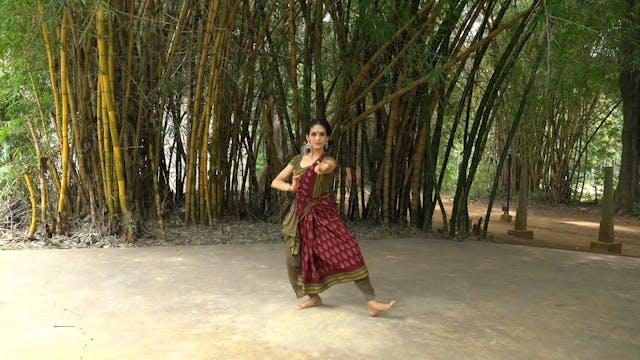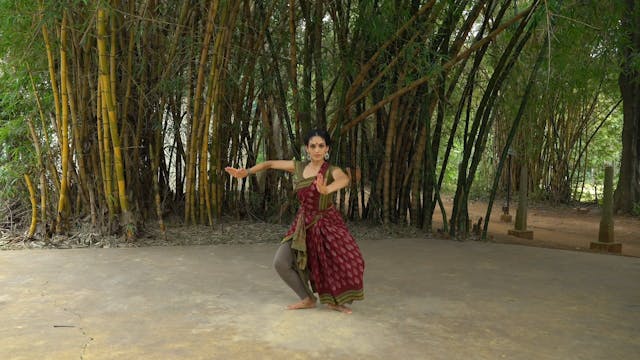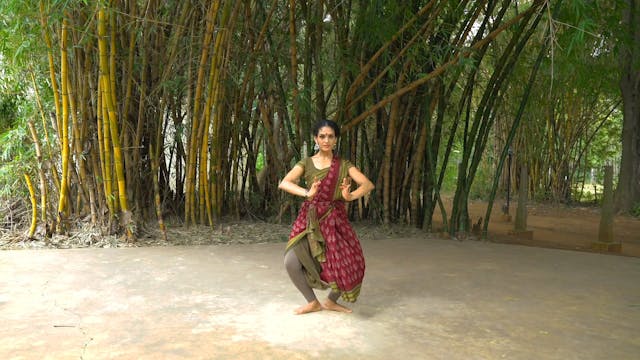'Jaaru', literally means, to slide. This is also called the Sarikal Adavu. In the RK Method, we refer to the standing series that end in Samapada as the Jaar Adavu series and the other sliding Adavus that use Muzhumandi, and Aalidam as Sarikal adavus for simplicity.
This Adavu incorporates the slide in different parts. Sometimes the slide is incorporated as the second leg slides toward the first and other times it is present as the extended foot drags in for the tap with both feet. Most commonly it is eliminated all together, as it is in this video. This is the second variety that we practice in the Raadha Kalpa method. The others will be added subsequently. The variations occur in the incorporation of the slide as well as in the chosen torso movement.
In this video, the eyes rise completely to the top. This is not usually recommended as the whites of the eyes are exposed completely. It is however a choice we have made for this variety of Jaaradavu. It can be modified and practiced such that the eyes rest at a point on the diagonal instead of looking all the way to the top.
Pointers:
Be clear with the last tap of the feet. Finish each time, and try not to allow your arms to bounce each time you finish the Adavu on the 4th count.
Up Next in Adavus: 1st Set
-
Teermana Adavu 1
The Theermana or Makutadavu, is placed at the end of a Korwe or Jathi in specific rhythmic patterns, to create an ending.
The leg is either placed outstretched directly in front or at a diagonal of 45 degrees. The foot is flexed and the heel strikes the floor. In the Raadha Kalpa method we begi...
-
Theermana Adavu 1, variation
The Theermana or Makutadavu, is placed at the end of a Korwe or Jathi in specific rhythmic patterns, to create an ending.
The leg is either placed outstretched directly in front or at a diagonal of 45 degrees. The foot is flexed and the heel strikes the floor. In the Raadha Kalpa method we begi...
-
Theermana Adavu 2
The Theermana or Makutadavu, is placed at the end of a Korwe or Jathi in specific rhythmic patterns, to create an ending.
The leg is either placed outstretched directly in front or at a diagonal of 45 degrees. The foot is flexed and the heel strikes the floor. In the Raadha Kalpa method we begi...


